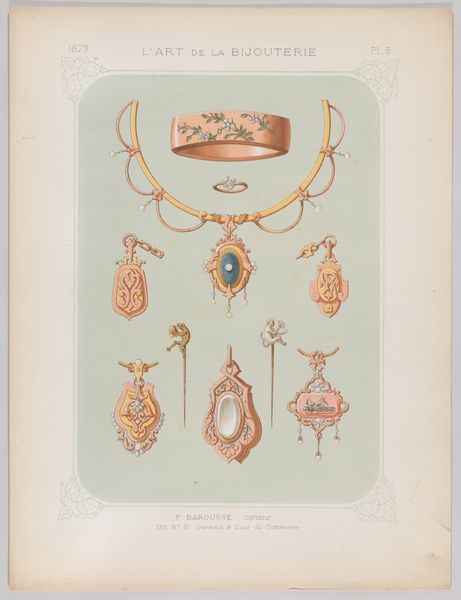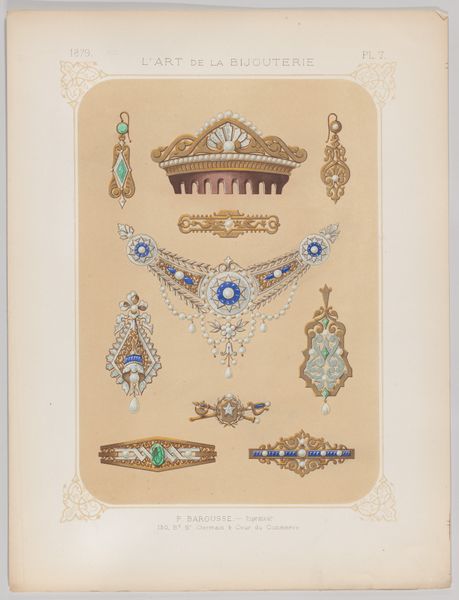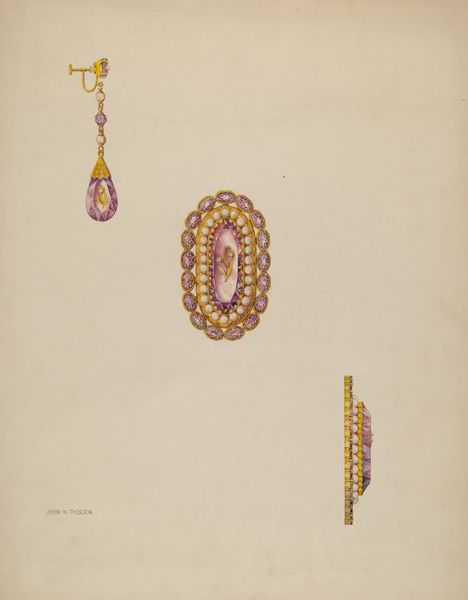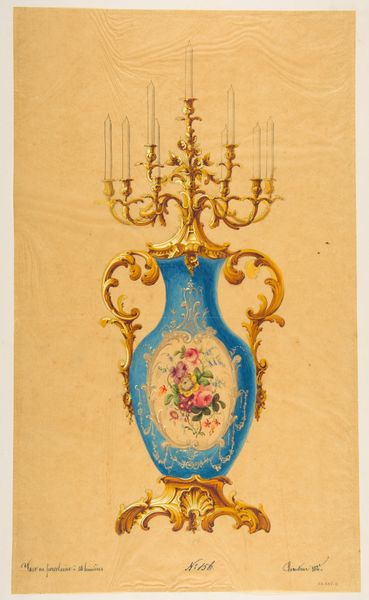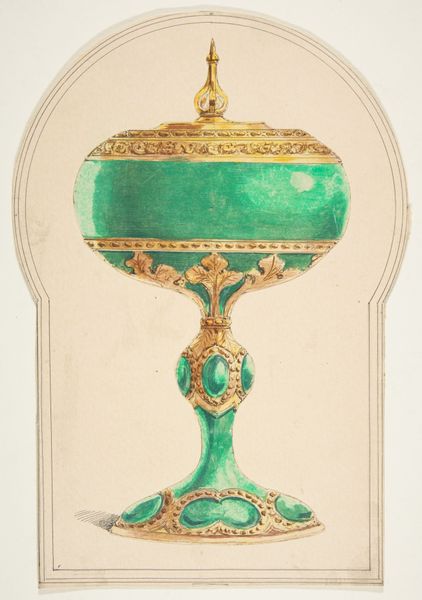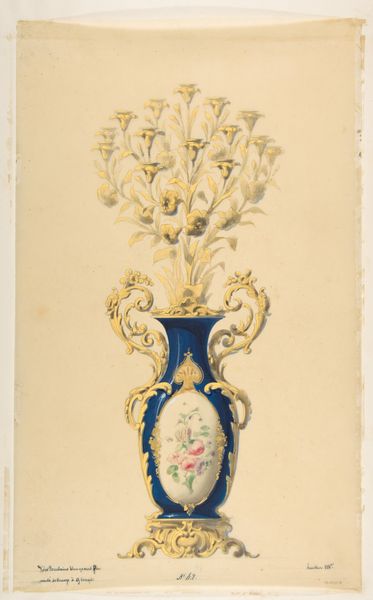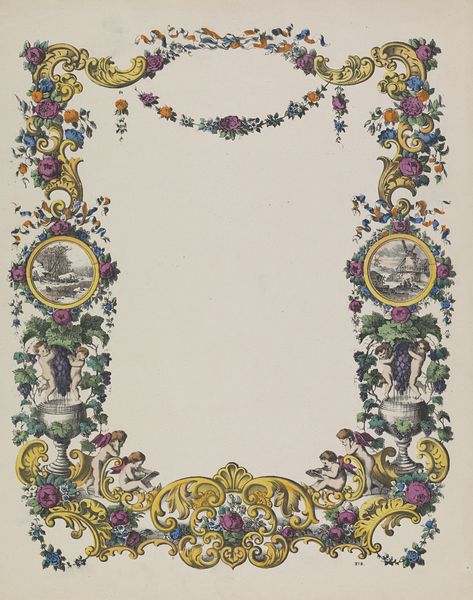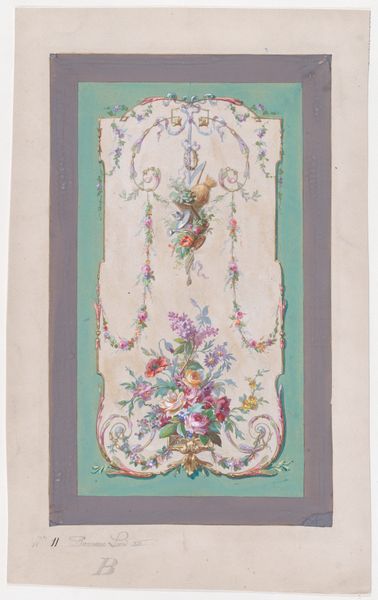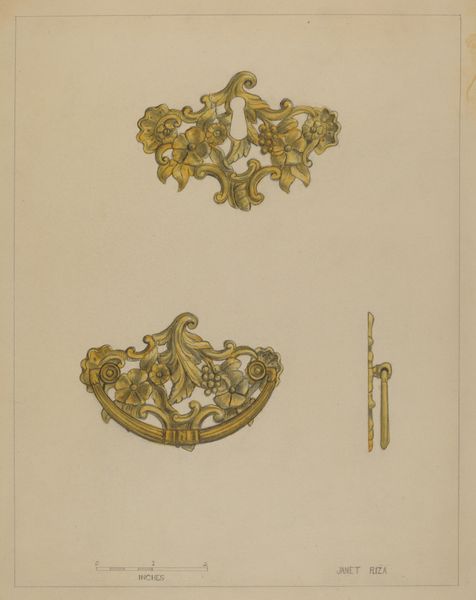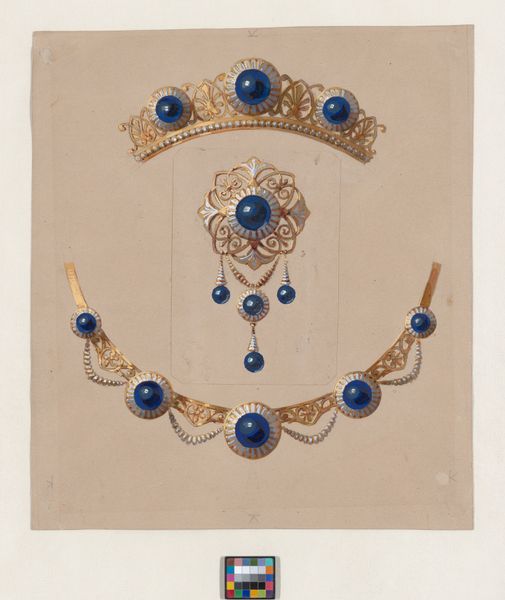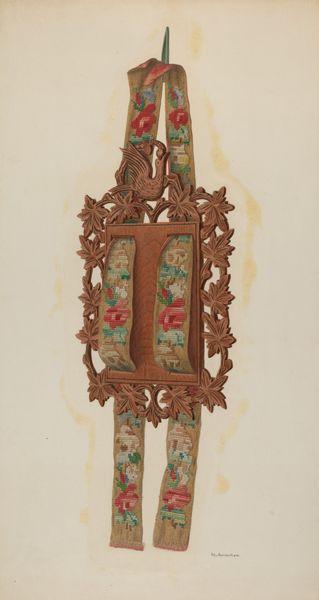
Dimensions: sheet: 10 7/8 x 7 5/16 in. (27.7 x 18.6 cm)
Copyright: Public Domain
Curator: This watercolor and print drawing is titled "Design for an Ewer." It was created in 1853, but the identity of the artist is currently unknown. Editor: It has such a delicate and serene quality, doesn't it? Almost dreamlike with the muted colors and soft washes. It feels very... contained, in its own little world. Curator: Absolutely. I’m immediately drawn to the decorative elements: the delicate floral garland, the stylized handle attachments, and the almost crown-like base. Ewers themselves historically signify ritual, and even purity— often linked with washing. It really highlights the social codes around cleanliness and hospitality, especially within wealthy households. Editor: Interesting. To me, those decorative elements also point to larger societal obsessions. The romanticism inherent in that garland of roses is palpable and loaded. It makes me wonder about gendered expectations in the mid-19th century, ideas about idealized beauty, fragility and domesticity. An ewer is such an everyday object—yet imbued here with such a heavy weight of social expectations, literally dressed to look presentable. Curator: That tension between the practical and the aspirational is key, isn't it? The ewer form is so classical—but these additions definitely add the imprint of Romanticism, like you said. There's a sort of quiet visual contradiction, a harmony of different aesthetics. Editor: Yes, and perhaps a clue in why the creator chose to stay anonymous: who and what does the design promote, in the end? Is it merely function, or does the object transcend into art that is making commentary? Curator: Food for thought indeed. These decorative programs allow the familiar object to gain another context. We might ask, does this object carry and then reflect the emotional tone of an era? What will be the long echoes into the future? Editor: For me, I leave pondering the cultural role that such art still carries: that is to invite deeper, and sometimes very necessary, introspection of ourselves.
Comments
No comments
Be the first to comment and join the conversation on the ultimate creative platform.

